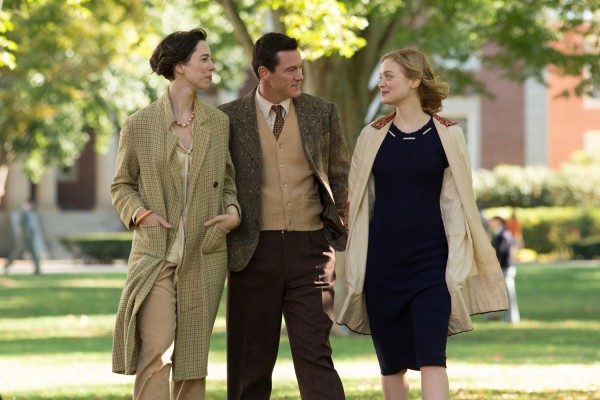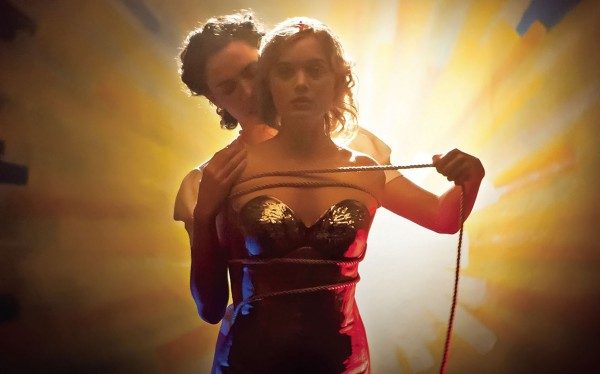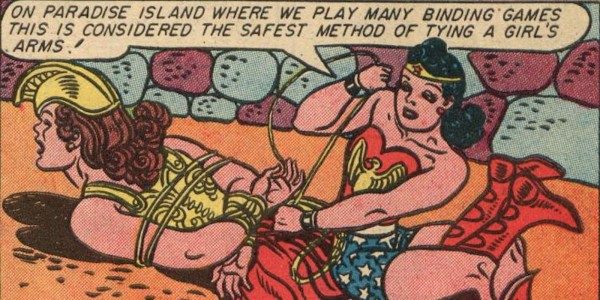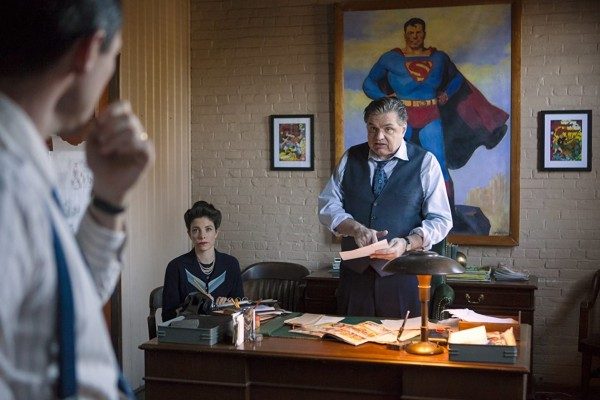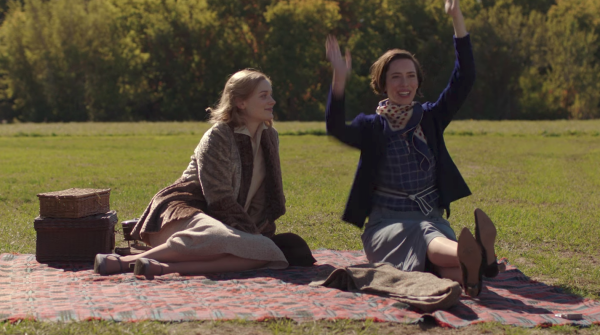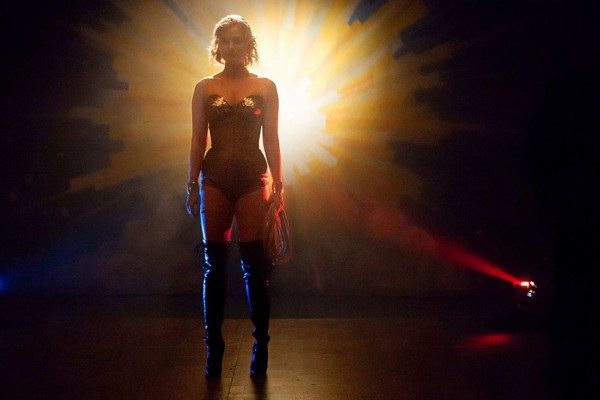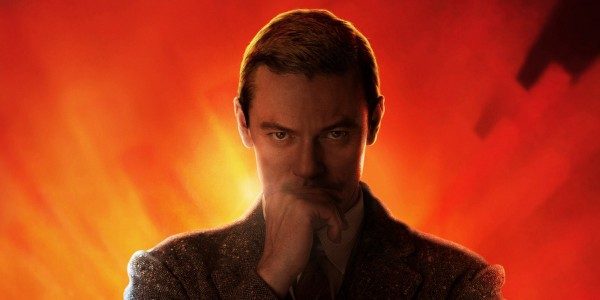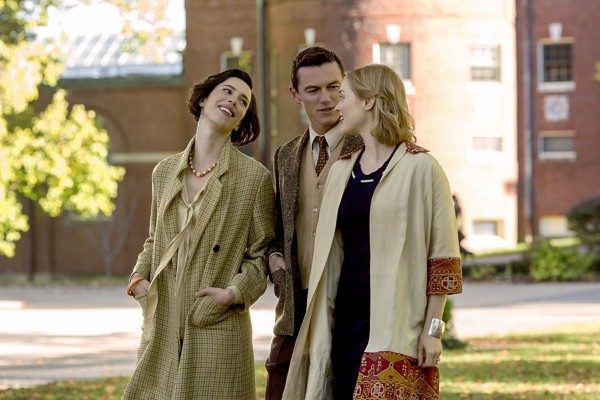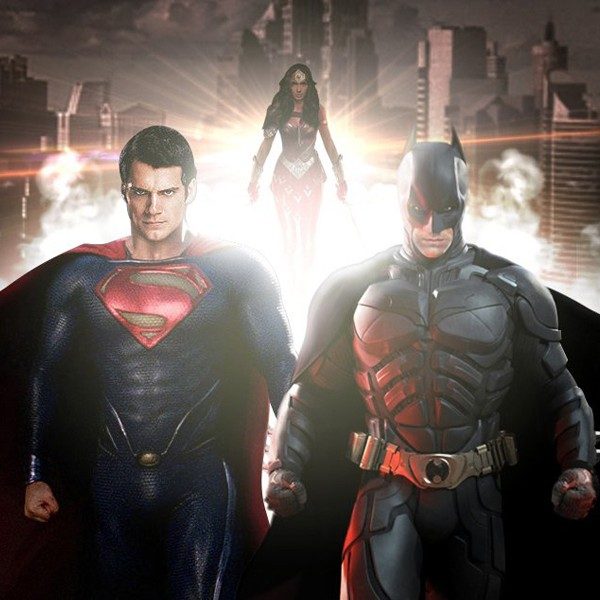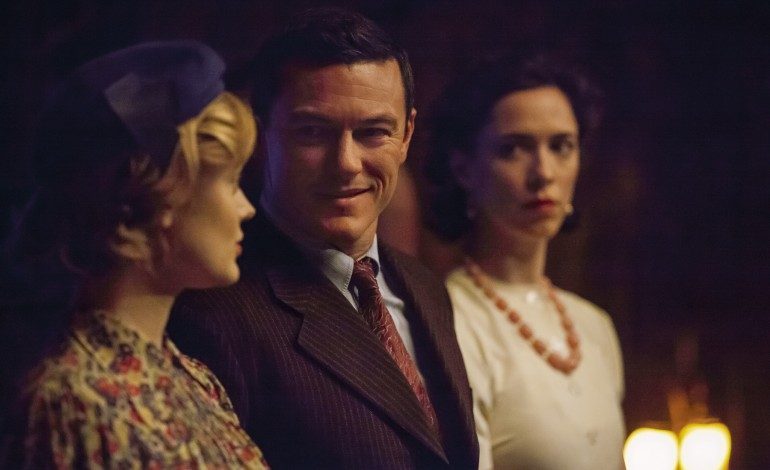

If any superhero deserves the spotlight these days, it’s Wonder Woman. After decades of false starts and rumors, the iconic Amazonian warrior princess finally received her long-overdue feature film debut in last year’s Batman v Superman: Dawn of Justice, followed by director Patty Jenkins’ massively successful Wonder Woman last June.
With star Gal Gadot ready to make her third appearance in the bulletproof bracelets next month in the long-awaited superhero team-up film Justice League, Wonder Woman’s name seems to be on everyone’s lips these days, and it’s about time. The character has stood as a symbol of female empowerment ever since her creation in 1941. And yet as the newest Wonder Woman film hit theaters this past weekend, it seemed to have almost as many naysayers as fans.
Writer-director Angela Robinson’s Professor Marston and the Wonder Women, which opened last Friday, is technically not focused on the superhero herself, but rather her creator, psychologist and inventor William Moulton Marston. Many individuals responded negatively to early trailers of the film, believing that it was only being produced and released now to capitalize on the popularity of Wonder Woman. It irked them that a film was apparently being made purely in the hopes that it could ride the coattails of Warner Bros.’ big-budget superhero extravaganza.
Other viewers were upset about the film because they knew of Marston’s story and understood the controversial nature of his early Wonder Woman comics, which featured frequent imagery of women in bondage, forced into submissive roles. Marston himself was involved in a polyamorous relationship with his wife and a former student, a fact that plays a key role in the new film.
These dissenters worried that a film focusing on the man who brought the world a submissive, sexualized version of Wonder Woman would undermine Gadot’s establishment of the character as a symbol of female strength in today’s world.
To make matters even more complicated, Marston’s granddaughter Christie has now come forward to denounce the new film as an unfaithful and inaccurate interpretation of her family’s story. Apparently, Robinson did not approach Christie when writing the film, choosing instead to interpret the Marstons’ story based on biographical information and research.
In recent interviews and social media posts, Christie Marston has argued that several scenes in the film are completely fabricated, while the relationship between her grandfather’s wife and former student is oversexualized. Some have responded to Christie’s complaints with sympathy, including former Wonder Woman actors Susan Eisenberg and Lynda Carter. But others have criticized Christie for believing secondhand family stories as fact (her grandfather died before she was born), rather than accepting the in-depth research of biographers who studied William Marston’s personal letters and records (upon which Robinson based her film).
Regardless of the accuracy of the film, ever since its premiere last month at the Toronto International Film Festival, reviews have been mainly positive, with critics praising the director and stars for attempting to paint an unbiased picture of a questionable man, two powerful women, and a controversial superhero origin story. Most audiences have appreciated the fact that the film stands in stark contrast to other Wonder Woman-related fare, while still maintaining a focus on the feminist ideals that always have and always will be a part of the Amazonian heroine. In short, it seems that the tale of Marston and the women with whom he developed Wonder Woman may be as polarizing today as it was in the 1940s.
The origin of the film itself can be traced to Robinson, who learned about the story of the Marstons in a comprehensive book on the history of Wonder Woman and felt compelled to make a film about them. She crafted a script that used Marston’s eyebrow-raising theory on women, men and submission as a sort of framework to present the story of Wonder Woman’s creation.
Believing that men were naturally violent and women inherently caring, Marston thought that the world would be a better place with women in charge. He even declared in 1937 that civilization would fully adopt a matriarchal structure within 100 years.
But along with these positive feminist ideals came some more questionable ideas. Marston saw bondage and submission as a key part of the balance of power in an ideal world. He thought that in order for loving, nurturing authorities to maintain control over society, individuals had to be trained to enjoy and consent to loving control rather than impulsively act on their individual aggressive tendencies, and the way to achieve this training was through bondage play and the establishment of bondage as an erotically appealing concept. He referred to this strategy as “sex love training.”
These theories eventually bled into Marston’s work in comic books, which he saw as a practical medium through which to teach a vast audience of young people to willingly submit to loving authorities. Hence the first several years of Wonder Woman comics, which were fraught with images of the character tying up enemies with her golden lasso of truth, being tied up herself, and even being spanked with paddles.
Of course, these instances almost always ended with Wonder Woman triumphantly escaping her bonds through powerful displays of sheer strength. Marston felt that providing men and young boys with an image of a woman stronger than themselves would make them feel much more comfortable submitting to female leaders.
But he also intended Wonder Woman to be a role model for young girls who lacked powerful female characters to look up to. Marston wanted girls to see that a woman could be loving and caring while also being strong, forceful, intelligent and liberated, just like the capable modern women of his era.
The professor also worked into his comic books additional concepts related to his research in psychology, such as ideas of transformative justice and rehabilitation. Even Wonder Woman’s iconic lasso of truth was a nod to Marston’s work, as he and his wife developed a key component of the modern lie-detector test.
Still, Marston was understandably not without his critics, and many saw (and still see) the erotic scenarios presented in his comic books as highly problematic and inappropriate for young, impressionable readers. A notable portion of Professor Marston and the Wonder Women revolves around a public-decency panel questioning Marston regarding the nature of his comic book creation and her connection to his mysterious personal life.
Aside from this investigation, one of the key purposes of the new film is to shed light on the women in Marston’s life, individuals who had as much of a role in the creation of Wonder Woman as he did. Elizabeth Holloway Marston, the professor’s wife, was an equally brilliant psychologist who encouraged her husband, when he suggested his idea of a comic book hero who conquered with love rather than violence, to make the character a woman.
Elizabeth also played a vital role in much of Marston’s research, initially suggesting a connection between emotion and blood pressure that served as the foundation of the systolic blood pressure test, the invention that would make Marston famous as one of the creators of the lie-detector test. Though Elizabeth worked with Marston throughout the development of this device, due to the particularly brutal sexism present in the field of scientific study, early records fail to recognize her as his collaborator. Only her own research and photos of her in Marston’s laboratory exist to confirm her involvement.
The new film addresses this issue head on, exploring Marston’s treatment of his wife as an intellectual and scientific equal (a woefully rare practice at the time), as well as Harvard University’s refusal to award Elizabeth a well-deserved Ph.D. Also an important aspect of Professor Marston is Elizabeth’s openness to the idea of a polyamorous relationship when Marston introduces her to a former student named Olive Byrne.
Byrne had her own part to play in the development of Wonder Woman’s character. While taking a class with Marston at Tufts University, Byrne struck up a close professional relationship with the professor, working as his research assistant. A vocal advocate of women’s rights and gender equality, Byrne was the daughter of radical feminist Ethel Byrne and the niece of birth control activist and sex educator Margaret Sanger, who together opened the United States’ first birth-control clinic in 1916.
Eager to develop a new vision of women’s place in society, Byrne brought Marston along to sorority parties to conduct research on the power dynamics between women and between men and women. She even conducted an interview with Marston on the educational potential of comic books and published the piece in a prominent magazine, which caught the eye of comics publisher Max Gaines and led him to hire Marston as a consultant for two companies that would eventually merge to form DC Comics. This opened the door for Marston’s work in comic books.
The relationship between Marston and Byrne eventually became romantic, a fact of which Marston’s wife Elizabeth was quickly made aware. Reportedly, Elizabeth grew to love Byrne as much as Marston did, and the three began a polyamorous relationship that would last for the rest of Marston’s life.
While the new movie portrays Elizabeth’s relationship with Byrne as sexual, Christie Marston has argued that in reality the two were more like sisters. In either case, their close bond was such that after Marston’s death in 1947, they continued living together until Byrne’s death in 1990. Marston also had children with both women, and Elizabeth named one of their kids Olive after Byrne.
According to Robinson’s new film, as well as statements made by Marston, Byrne had an even more direct impact on the creation of Wonder Woman. Marston based the character’s appearance somewhat on Byrne’s likeness, and the Amazonian heroine’s bulletproof bracelets were inspired by the bronze jewelry Byrne wore.
The movie clearly asserts that Elizabeth and Byrne had just as much of a hand in crafting Wonder Woman as Marston did, and there is certainly truth to the this part of the story. Multiple sources, including Marston’s own personal letters, have confirmed the key role these women played in the development of the character.
But Christie Marston’s complaints about fabricated events bring up the age-old debate regarding artistic license in the creation of biographical films. Essentially, how much is a screenwriter or director allowed to bend and twist facts in order to better fit them into a streamlined story?
In a movie focusing on a particular historical event, occasional inaccuracies are generally forgiven, but in a film telling the life story of a real individual, things get personal. It’s perfectly understandable that Christie Marston would want to protect the legacy of her grandparents and ensure that their story is being properly presented. Indeed, in one of her tweets denouncing the new movie, she referred to a separate film in development that will be presenting the Marstons’ story accurately.
But for now, Robinson’s movie will serve as many moviegoers’ first exposure to Professor Marston, and some seem upset with what they are seeing. Part of the problem may be the advertisements for the film. As Christie Marston herself pointed out, early posters for the movie appeared to borrow the same color and composition as posters for last June’s Wonder Woman. Trailers for the new movie used phrases pulled from early reviews such as, “The year of Wonder Woman continues,” while also highlighting the romantic relationship between Marston, Elizabeth and Byrne.
These signs suggest that the movie is leaning heavily on the popularity of Wonder Woman at the movies these days to find success, rather than attempting to stand on its own. They also indicate a focus on the controversial nature of the polyamorous relationship, which is far less important than the actual individuals involved in the relationship. Based on these promotional materials, it is easy to see why some Wonder Woman fans viewed the film negatively leading up to its release.
Nevertheless, whether accurate or factually muddled, hopefully Professor Marston and the Wonder Women will at the very least draw attention to the three intelligent, progressive and revolutionary individuals who brought Wonder Woman into existence. Their lives, no matter how controversial they may have been, are certainly worth learning about today.

